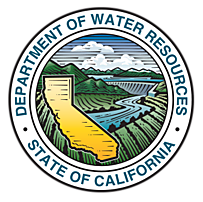Sphinx examples
Math
You can use the .. math:: directive to display mathematical equations using the sphinx.ext.mathjax extension (this is already configured in docsrc/conf.py). You can find a list of Greek letters and math symbols and how to display them in LaTeX here. Equations (1) and (2.12) are shown below with the following code.
The reference to the first equation is done with :eq:`eq_continuity`. But since the second equation uses a custom tag number (to correspond to the SCHISM 5.8 manual equation numbers), you need to add a hyperlink target using .. _eq_turb_closure: and then reference it using `(2.12) <_eq_turb_closure>`_
.. math::
:label: eq_continuity
\nabla \cdot u + \frac{\partial w}{\partial z} = 0
.. _eq_turb_closure:
.. math::
\frac{Dk}{Dt} = \frac{\partial}{\partial z} \left(\nu_{k}^{\psi} \frac{\partial k}{\partial z}\right) +
\nu M^2 + \kappa N^2 - \epsilon + c_{fk}\alpha|u|^3 \mathcal{H} (z_v-z) \tag{2.12}
Figures
You can embed figures using the ..figure:: directive. All figures (.png, .jpeg, .svg, etc) are stored in the docsrc/img/ folder. When specifying the image file location it needs to be relative to the .rst file that is being used. So for this page, it is using the docsrc/meta_doc/doc_examples.rst file, so the references to a figure would be ../img/<FILENAME>.
To reference the figure, you can add a hyperlink above the figure and then reference it using :numref:`example_dwr_logo`. That would render as Fig. 7. You can embed a figure using the following code:
.. _example_dwr_logo:
.. figure:: ../img/dwr_logo_small.png
:align: center
:width: 200px
A small California Department of Water Resources logo.

Fig. 7 A small California Department of Water Resources logo.
Diagrams
You can embed diagrams produced with Mermaid Charts as html using two methods.
Sphinx Mermaid Directive
The first is to use the .. mermaid:: directive directly in the .rst files. That would look something like:
.. mermaid::
:align: center
flowchart LR
id1(Box with round corner)
id2([Stadium])
id3[(Database)]
id5{{Hex}}
id6[\Parallelogram\]
id1-->id2
id1-->id3
id2-.-id5
subgraph A box around stuff
id3 ==> id6
end
style id1 fill:green,stroke:black
style id2 fill:white,stroke:#f66,stroke-dasharray: 5, 5
style id3 fill:#66f,stroke:#f6f,stroke-width:4px
style id5 fill:orange,stroke:white
style id6 fill:yellow,stroke:blue
And would produce the following chart:
flowchart LR
id1(Box with round corner)
id2([Stadium])
id3[(Database)]
id5{{Hex}}
id6[\Parallelogram\]
id1-->id2
id1-->id3
id2-.-id5
subgraph A box around stuff
id3 ==> id6
end
style id1 fill:green,stroke:black
style id2 fill:white,stroke:#f66,stroke-dasharray: 5, 5
style id3 fill:#66f,stroke:#f6f,stroke-width:4px
style id5 fill:orange,stroke:white
style id6 fill:yellow,stroke:blue
You can see more on cool things you can do with mermaid charts in the Mermaid documentation.
Embedding Charts with SVG
Another way is to create .svg files and embed them into the documentation. This is done using the .. raw:: html directive.
.. raw:: html
:file: ../img/nudging_flowchart.svg
Produces:
Embedding Videos
You can embed videos with the .. raw:: html directive. This is done by copying the html code from the YouTube video and pasting it into the .rst file. For example, the following code embeds a video into this page.
To get the code, go to the YouTube video, click on the “Share” button, and then click on the “Embed” button. Copy the text and paste it between the <div style….> and </div> tags.
.. raw:: html
<div style="position: relative; padding-bottom: 56.25%; height: 0; overflow: hidden; max-width: 50%; height: 50%; margin: 2em auto; text-align: center;">
<iframe width="560" height="315" src="https://www.youtube.com/embed/lPQ9ZGAD33k?si=cErRdwXPo98syDK3" title="YouTube video player" frameborder="0" allow="accelerometer; autoplay; clipboard-write; encrypted-media; gyroscope; picture-in-picture; web-share" referrerpolicy="strict-origin-when-cross-origin" allowfullscreen></iframe>
</div>